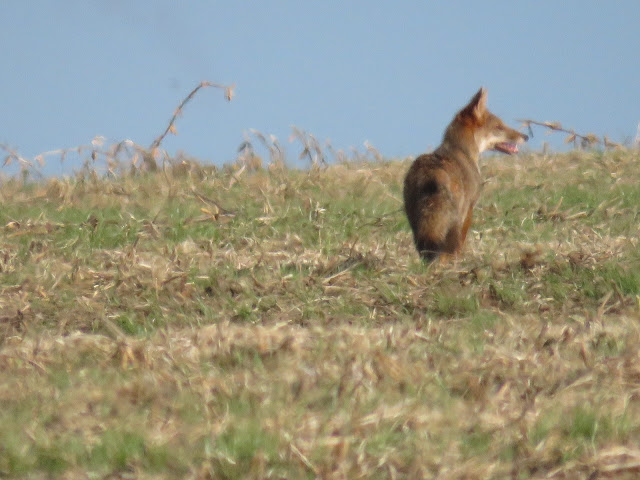 |
| Southern lapwing (quero-quero, Vanellus chinensis). You can see the spurs (esporões) on the top of the open wings. |

 |
| Suddenly, this quero-quero decided to fly, and I had the luck to capture some unusual photographs. See below. |
|
Southern lapwing (quero-quero) & Pampas fox (graxaim).
|
 |
| Southern lapwing (quero-quero) & Pampas fox (graxaim). Brazil, State of Rio Grande do Sul. |
 |
| Southern lapwing (quero-quero) & Pampas fox (graxaim). Both species were feeding on a recently harvested plot of soybeans. |
 |
| Southern lapwing (quero-quero) & Pampas fox (graxaim). On the top of the picture, you can see a crop of soybeans, ready to be harvested. |
 |
 |












































